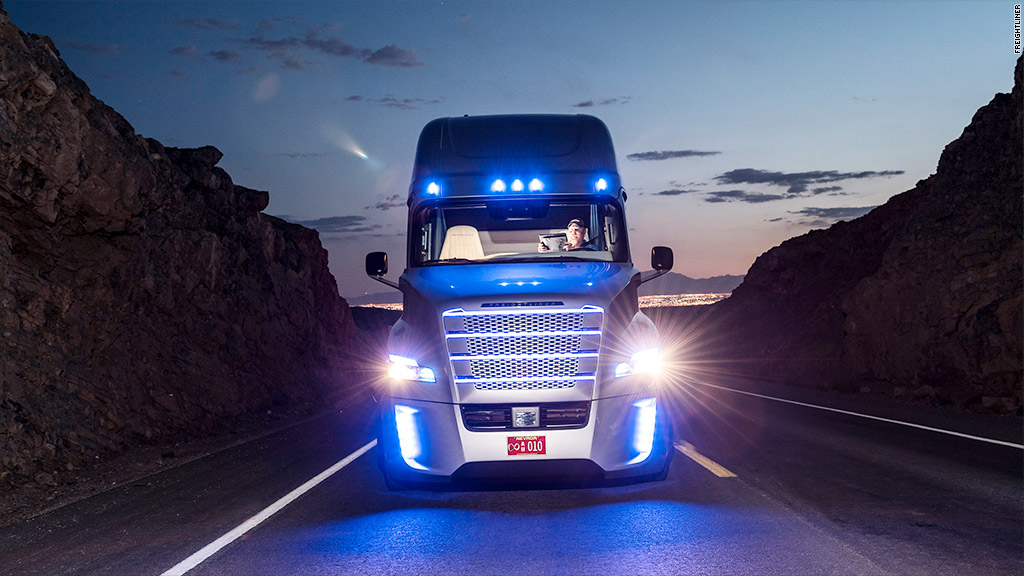
After a flurry of coverage following news that Google's self-driving cars have been involved in a spate of fender benders, the tech giant wants you to know that it's human drivers in other cars who are at fault, not its computerized vehicles.
Google revealed on Monday that its autonomous vehicles have been in 11 "minor" accidents in California since it launched its self-driving car project over six years ago. Four of those accidents took place within the past nine months, according to the state's Department of Motor Vehicles.
None of the accidents were caused by Google's cars, according to Chris Urmson, director of Google's self-driving car program and a Google (GOOG) spokeswoman.
Urmson said in a blog post that Google's cars have been side-swiped "a couple of times," rear-ended seven times -- "mainly at traffic lights but also on the freeway" -- and hit by a car that drove through a stop sign.
None of the incidents caused injuries.
Statistics for minor fender benders are a blind spot in driving safety research, Google says.
"The most common accidents our cars are likely to experience in typical day to day street driving — light damage, no injuries — aren't well understood because they're not reported to police," Urmson explained.
As of September 16, 2014, all car manufacturers wanting to test autonomous technology in California are required to have a DMV permit. Manufacturers are also required to report testing to the DMV, including crashes. Before September of last year, there were no testing regulations in place for autonomous vehicles.
"We have a detailed review process and try to learn something from each incident, even if it hasn't been our fault," Urmson said.
California law also restricts its DMV from providing details to the media about where these incidents took place, or what happened in each accident. (An AP report said that two of the recent four accidents happened while the car was in "self-driving" mode, while the other two incidents took place when a person was in control of the vehicle.)
Google did not directly respond to the AP article's assertions.
The tech company currently has over 20 self-driving cars. They have sensors to help them avoid obstacles like people and other cars. They also have GPS tracking, radar, and software that enables the cars to recognize and react to street signs and signals.
Google has already identified many patterns of driver behavior, such as lane-drifting and red-light running, that are leading indicators of significant collisions, and programmed its cars to adapt.
For example, Google's cars pause after a light turns green before moving through an intersection to avoid potential red-light runners. If a driver tries to abruptly cut lanes, Google's cars slow down when they sense another vehicle entering a pre-determined buffer zone to avoid collision.
More than 2.3 million people were injured in car crashes in 2013, according to the National Highway Traffic Safety Administration. Despite huge advances in auto safety, the overwhelming majority of those accidents are caused by human-driver error.
Detecting human-driver error is what concerns Jake Fisher, director of automotive testing at Consumer Reports.
He doesn't doubt Google's claim that its cars weren't at fault for these accidents, but wonders if they could have been prevented if human drivers were in control.
Human drivers can look for social cues that indicate a potential accident before a computer might sense one. Drivers can see if other drivers have their eyes on the road, or if they're gesturing.
"A computer will have to do that if it wants to avoid accidents," Fisher told CNNMoney. By the time a self-driving car senses another vehicle is in its buffer zone, it could already be too late.
He also disagrees with Google that "there's little the driver in front can do to avoid getting hit." Fisher argues that human drivers can and do avoid rear-end collisions if they check rear-view mirrors and steer off to the side of a road.
If Google's account of the accidents is true, that its cars were not the cause, then Google still has more to do to better predict and avoid accidents caused by human-driver error.
"Safety is our highest priority," a Google spokeswoman told CNNMoney.
The company's self-driving cars have driven nearly a million miles autonomously, on both freeways and city streets, and Google says it will continue to test drive its cars to gather more data about common driving problems.
But Urmson admits that a perfect solution to prevent accidents may never exist.
"If you spend enough time on the road, accidents will happen whether you're in a car or a self-driving car," he wrote. "Although we wish we could avoid all accidents, some will be unavoidable."


